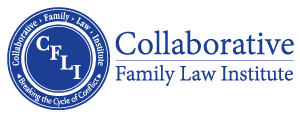Using The Collaborative Process To Resolve Marital Dissolutions in Florida
by: David B. Mitchell, Esq.
David B. Mitchell, P.A., mitchellesq@aol.com
In 2016, the Florida legislature enacted the Collaborative Law Process Act which authorized and detailed the collaborative process as it applies to family law matters. These include dissolution of marriage and related issues, paternity, and prenuptial and marital agreements. The Florida statute added the collaborative process to the available methods of resolving disputes in these areas. As of today, there are various methods through which these disputes can be concluded, including the traditional route of litigation, by means of mediation, and by utilizing the collaborative process. It is up to the parties to determine which avenue will be traveled to close the dispute.
Each of these three methods of dispute resolution has its advantages and disadvantages. One can use the image of a pyramid to describe the litigation process with the judge at the top of the pyramid, the lawyers in the mid-point and the parties and their witnesses at the bottom. The litigation process will typically involve many months of legal maneuvering, delays in securing needed documents and will require a tremendous investment in legal services by the parties. Often, the family’s finances are crippled by litigation. Also, with a ‘win-lose, zero sum-game’ approach, litigation can be damaging to long-term family relations. In mediation, the pyramid is inverted with the parties at the top, the lawyers in the middle facilitating the negotiations and the absence of a judge. There is a new participant: The Mediator. The Mediator shuttles between the parties while working to craft a settlement agreement. Typically, mediation can involve a single, full day of negotiations and can leave the parties physically and emotionally exhausted.
The collaborative process sits apart from either litigation or mediation. Florida statutes define the collaborative process as one without the intervention of a judge and it is governed by a participation agreement signed by both parties. The process involves both sides working with their respective lawyers, a neutral mental health professional and a financial neutral (typically, a forensic accountant), all collaboratively trained, working together as a team to resolve the family law matter. Without the constraints presented by litigation and with more time to resolve the case than that typically available in mediation, the parties can expeditiously gather the necessary information, settle immediate issues, and reach a final settlement in a cooperative fashion. Additionally, the statute provides that collaborative communications between the participants are generally confidential, encouraging open discussions.
The collaborative process to resolve family law issues requires a commitment by all participants to be open and transparent, possessing a willingness to resolve their matter. The result can be a comprehensive settlement agreement that typically only requires the court’s final approval. This new addition to the alternative dispute resolution processes opens the way to settle family law cases without the adversarial nature of litigation or the time-pressure of mediation. Everyone facing a family law matter would benefit by being advised of the availability of collaborative family law and its many advantages.
